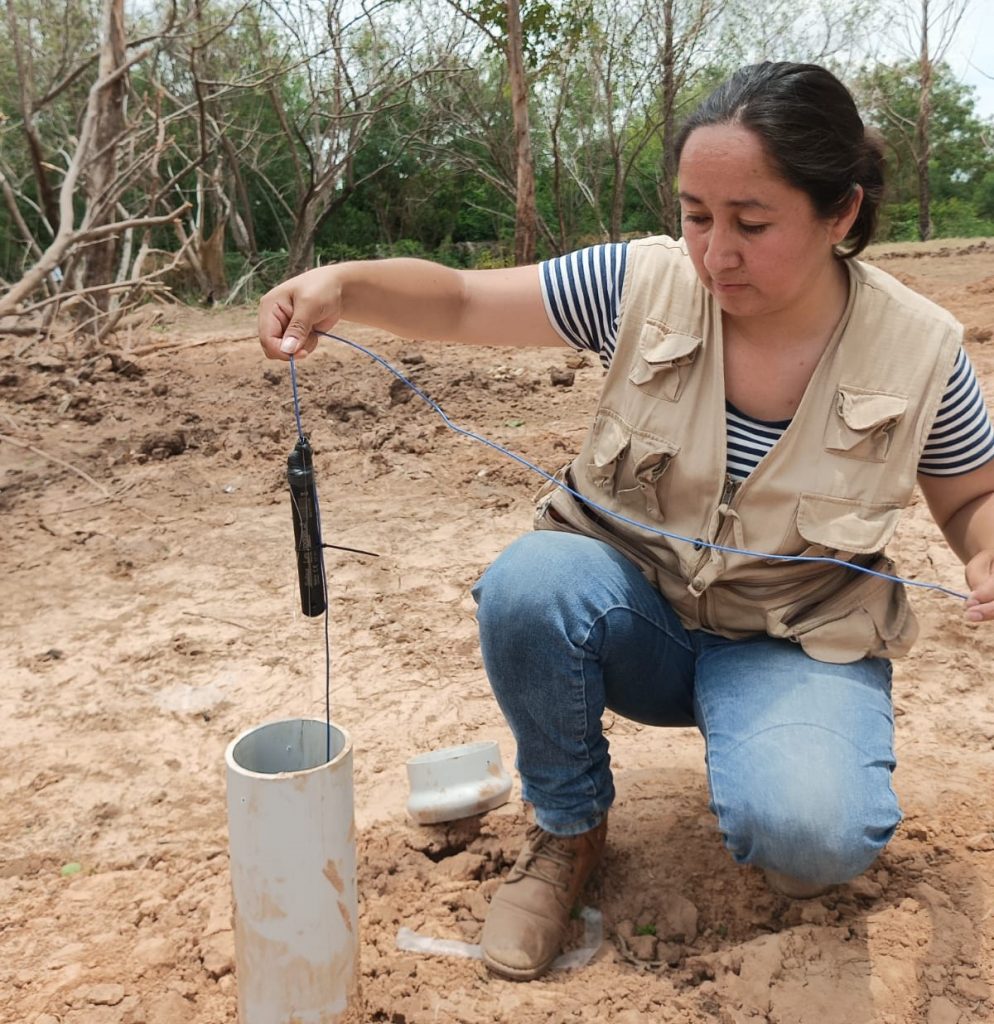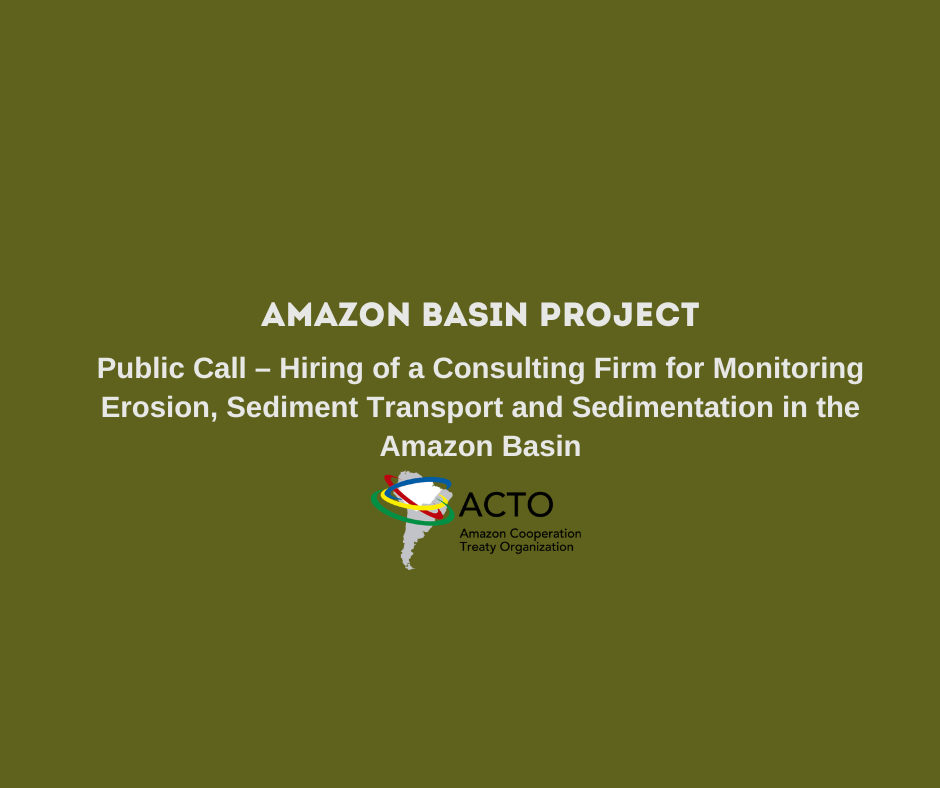The attentive gazes of 132 children filled the large hall of the San Jacinto Educational Unit, a school in the town of Sacaba, located in the Bolivian Amazon. In front of them, images depicting the water cycle and its importance for life were paraded, inviting them to take care of this natural resource that could become scarce for its multiple uses due to pollution, environmental degradation and climate change. This activity was part of the socialization of children and adults to promote care for water, a process that was implemented as part of the project “Establishing Groundwater Quantity and Quality Monitoring Networks in Important Urban Aquifers in the Madeira River Basin”.

Socializing children at the San Jacinto Educational Unit in Sacaba
Having reached its final phase, the project now has fully established monitoring networks in two aquifers immersed in the Madeira River basin, one of the main tributaries of the Amazon. This December, the monitoring equipment began operating with the aim of providing data on the quantity and quality of the groundwater that supplies a population of almost 1.5 million people in the city of Santa Cruz de la Sierra and around 172,000 people in the municipality of Sacaba.
The establishment of aquifer monitoring networks in the Amazon basin, such as those in Santa Cruz and Sacaba, is one of the strategic actions being implemented to strengthen Integrated Water Resources Management (IWRM) in the Amazon. The action is part of the Strategic Actions Program (SAP), agreed in 2017 by the member countries of the Amazon Cooperation Treaty Organization and currently being implemented through the Amazon Basin Project (ACTO/UNEP/GEF).
The intervention in Bolivia is being coordinated by the General Directorate for Boundaries and Transboundary International Waters of the Ministry of Foreign Affairs and has the technical supervision of the Ministry of the Environment and Water (MMAyA), through the Special Studies Unit of the General Directorate for Planning. The Department of Santa Cruz de la Sierra, the municipalities of Sacaba and the sub-municipalities of El Abra and Tunari are also taking part.
Protection, sustainable management and rational use of groundwater
The data generated by the monitoring networks in Santa Cruz de la Sierra and Sacaba will make it possible to establish policies for the protection of aquifer systems and their proper and sustainable management, identifying signs of overexploitation or possible contamination. In addition, with this information, it will be possible to plan the efficient use of groundwater, designing and forecasting alternatives to meet the demand for drinking water.

The gray dots indicate the existing wells in the two aquifers and the green dots are part of the monitoring networks in Santa Cruz de la Sierra and Sacaba
At the same time, the information derived from the monitoring networks will be incorporated into Bolivia’s Groundwater Information System (SIASBO), which is designed to store technical data on wells, geophysics, springs and quality and quantity monitoring. At the regional level, these networks will form part of the Regional Groundwater Management Center for Latin America and the Caribbean (CeReGAS), a reference in the articulation of national and regional capacities for the generation and transfer of knowledge related to the management, protection and promotion of the rational and sustainable use of groundwater.
The networks will also provide data for ACTO Amazon Regional Observatory (ARO), which is a reference center for regional scientific and technological information on the Amazon.
Conformation and operation of the monitoring network
To establish the monitoring network in Sacaba, the project built three piezometers, devices that measure and control the water level, and incorporated inactive or abandoned wells. “In these wells, which were no longer operated by the Water and Sanitation Services Provider (EPSA), it was possible to measure and control the amount of water in the aquifer,” says the project’s technical supervisor, engineer Beatriz Canaviri, from the MMAyA.
“Some old wells have been equipped with automatic sensors that store data on the quantity and temperature of the water. These devices will transfer the data to the information systems at specific times using software. Portable piezometric probes will be used to measure the water table,” explains hydrogeologist Fabiola Zavala, the intervention’s technical manager.

Hydrogeologist Fabiola Zavala uses an automatic sensor to measure a well in Santa Cruz de la Sierra
For the water quality studies of the Sacaba aquifer system, wells in production were considered, since the samples for analysis must contain fresh water.
In the case of the Santa Cruz de la Sierra aquifer system, the existing monitoring network was expanded with the construction of three piezometers with automatic sensors. These devices are analyzing even its shallow waters because, according to data prior to the establishment of the new monitoring network, Santa Cruz’s groundwater, at its shallowest levels, is contaminated. This has led many EPSAs to draw drinking water from the deeper levels of the aquifer.
In total, the project built six piezometers and installed ten sensors in the two monitoring networks. One of the piezometers was installed at the San Jacinto Educational Unit, enabling an educational and awareness program for students and teachers to promote water care. The data collected by the equipment will be monitored and incorporated into the Bolivian Groundwater System (SIASBO) on a monthly basis.
Technical training
After the implementation of the monitoring network was completed, technical training began on how to use and manage the automatic sensors and how to interpret, compile and transfer the data stored in their software to the regional monitoring systems.
According to engineer Zavala, training and technical updating should be permanent and aimed at government institutions, non-governmental organizations and EPSAs: “By strengthening the capacities of these actors, we hope to improve decision-making, promote the implementation of evidence-based policies and strategies and encourage the active participation of society in the management and conservation of water resources,” she concluded.



